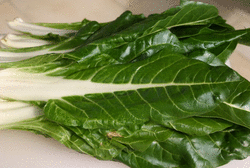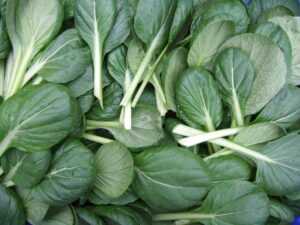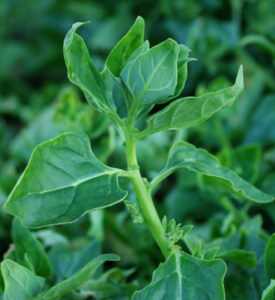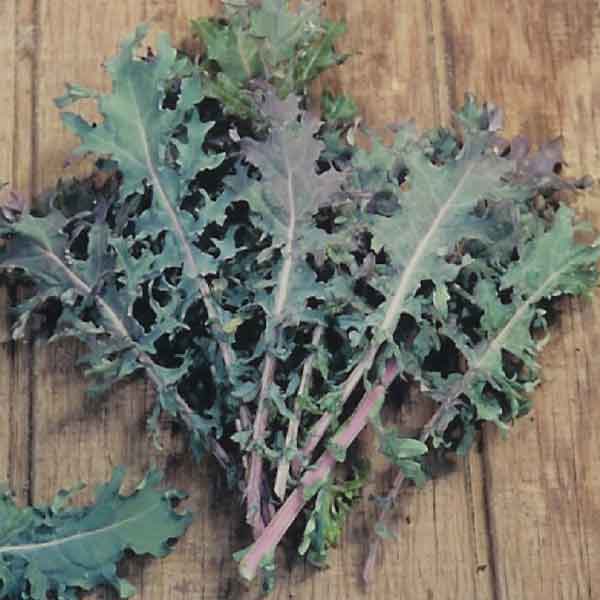At the end of this month, we bid farewell to Melissa and her delectable dried fruit rolls. After many years of drying fresh fruit and preparing fruit leather from original and yummy fruit mixtures, Melissa is now embarking upon a new endeavor. We would like to take this opportunity to thank her kindly for many years of adding sweetness to your boxes, and wish her great luck in all future pursuits.
Mipri Yadeha fruit rolls will be available till the end of December 2022. Add them to your boxes via our order system now!
Thank you, Melissa, and best of luck!
Nothing Gold Can Stay
Nature’s first green is gold, Her hardest hue to hold. Her early leaf’s a flower; But only so an hour. Then leaf subsides to leaf. So Eden sank to grief, So dawn goes down to day. Nothing gold can stay.
Robert Frost
We anxiously await the rain. Though we’ve been rewarded with a few nice downpours, the Real Rain has not yet graced us with its appearance. It is thus time for our traditional Chubeza Rain Dance to beseech the heavens to shower us with their treasures!
The last of the summer crops – the pumpkin, chili pepper, garlic, eggplant and Thai yard-long beans are marking their final weeks as they transfer the relay-race stick to the new winter crops. As we write, the carrots, beets, kohlrabi, fennel, radishes and turnips, cabbage, cauliflower and broccoli are already skipping and hopping to our packing house, along with lots and lots of leafy greens in various shades of color and texture.
I always know it’s wintertime when my green-o-meter shows a dozen emails with the subject, “What ARE those green leaves in my box this week!?” Indeed, winter generates a broad variety of greens dotting the Chubeza clods, filling up your boxes. Some of you are delighted with the plethora of greens over the winter, and even request we avoid removing the beet and turnip leaves so as to make use of them as well. Yet others of you are a bit overwhelmed, and wonder what can be done (again) with all those greens. This year, we’ve even expanded the shades of greens, making the realm all the more confusing. So for the miffed among us, I am proud to present:
“Chubeza Winter Greens – A Guide to the Perplexed”
Swiss Chard:
A sibling of the beet, differing by growing huge leaves instead of a thick root. Swiss chard is perfect in soup, quiches, and stuffing, as well as steamed or tossed, and even tossed fresh in a salad. Swiss chard is perfect in soup, quiches, and stuffing, as well as steamed or tossed, and even tossed fresh in a salad.
Here is a wide variety of recipes.
Tatsoi (Spinach mustard, Spoon mustard, or Rosette bok choy)
A native of the Far East, member of the choy or soy family, belonging to the Brassicaceae dynasty. Its flavor is just slightly bitter, not spicy, but very distinctive. Excellent when served with piquant flavors (mustard and black pepper), ginger, sesame and sweet fruit varieties. Like mustard greens or Swiss chard, tatsoi can be used fresh in salads, tossed or cooked, in soup, quiches, omelets, and more.
Here are some thoughts about tatsoi, and a recipe. Scroll down and you’ll find some links to other recipes.
New Zealand Spinach
As indicated by its name, its origins are in New Zealand and Australia. Discovered by Captain Cook on the beaches of New Zealand, this green was harvested, cooked and even taken along on voyages to fight Vitamin C deficiency-caused diseases (i.e., tetanus). New Zealand spinach is ideal for our local climate, thanks to its penchant for warm weather. Sporting small and meaty leaves, it enthusiastically sprawls and spreads.
New Zealand spinach can be used in any recipe calling for mustard greens, but is definitely suitable as a Swiss chard replacement. To prepare for cooking, one must remove the leaves from the stem which is hard and inedible. Unlike regular mustard greens or Swiss chard, eating New Zealand spinach raw is not recommended. First soak it in hot water for several minutes, then wash with cold water.
Recipes for New Zealand Spinach
Winter Spinach
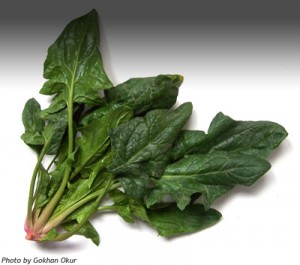
Depending on the season, the bed in which it’s grown, and the timing of its harvest, spinach can sport huge leaves or resemble “baby” spinach.
It definitely tastes green (I used to be surprised when people described a flavor as “green”), just slightly bitter and then just a little sweet, chockful of rain and freshness flavors.
Like its cousin Swiss chard, spinach can be served fresh in a salad or can be cooked, added to soup, a quiche, dumplings, an omelet or warm salads. They all work.
Arugula
This yummy green goes by many names: arugula, rucola, roquette and rocket lettuce. Its flavor is piquant, typical of the Brassicaceae family. Like spinach, arugula can come in many forms, from huge and meaty to small and dainty.
The arugula leaves are spicy, but they have their own distinctive type of piquant flavor which can add a dash to a salad, even together with sweet fruit. Cheeses go quite well with arugula, and a very light cooking can temper the spiciness.
You can find many recipes if you search the internet for “arugula” or “rocket lettuce.”
Kale
A green belonging to the Brassicaceae family, considered to be one of the healthiest foods around. An acquired taste, but definitely worth getting used to and falling for.
After many years in which we grew only one kale variety (the Russian Red Kale, as seen above on the left), this year we opted to add the curly kale. It comes in a lighter shade of green, and as of now seems to be a runaway success.
Due to its relatively rigid texture, kale is usually cooked or added to a green shake, but you can make chips from it or eat fresh in a salad—-it’s great!
Songs of praise and kale recipes to be found here
Vegetable greens like being connected to their roots and the earth. When you want to store them after harvesting, you should attempt to prevent two unwanted side effects: drying up and rotting. There are several methods for long-term storage. First, to prevent rotting, avoid moistening the greens and only wash them prior to use. To keep them moist, large leaves like lettuce, Swiss chard, kale, tatsoi, spinach and mustard greens should be wrapped (unwashed) in cloth or paper and placed in a plastic bag in order for the moisture to be absorbed without actually drying up.
By the way, lots more recommendations on how to store the various vegetables are found on our website under Storage Tips.
But for all this green abundance to actually grow, we desperately need winter showers, so please pray, hope, beg, insist or practice your rain dance steps till that “precip” graces us with its presence.
That’s all for now! I hope the green picture is a bit clearer for you all. But never fear. Should an unrecognizable guest arrive in your boxes, we are just a phone call away for clarification. You are always welcome to pose questions by phone (054-653-5980, although often it’s hard to get ahold of us) or by email ([email protected]). Our loyal Facebook page of Chubeza members is always helpful as well for information or suggestions.
May we all enjoy a week of good fortune, health and growth!
Alon, Bat Ami, Dror, and the entire Chubeza team
_____________________________________
WHAT’S IN THIS WEEK’S GREEN BOXES?
Monday: Kohlrabi/fennel, beets/ turnips, lettuce/arugula, carrots/slice of pumpkin, daikon/baby radishes, sweet potatoes, cabbage/cauliflower, tomatoes, cucumbers, broccoli/Jerusalem artichokes/green or yellow string beans, parsley/coriander/dill. Green gift for all: winter spinach/totsoi/New Zealand spinach.
Large box, in addition: Swiss chard/kale, celery/celeriac, scallions/ onions.
FRUIT BOXES: Oranges/pomelit, clementinas, avocados, bananas/green or red apples, pomegranates.
Wednesday: Kohlrabi/fennel, beets/eggplants/peppers, lettuce/arugula, carrots, daikon/baby radishes/turnips, sweet potatoes, cabbage/cauliflower, tomatoes, cucumbers, broccoli/Jerusalem artichokes/green or yellow string beans, parsley/coriander/dill. Green gift for all: winter spinach/totsoi/New Zealand spinach.
Large box, in addition: Swiss chard/kale, celery/celeriac, scallions/onions.
FRUIT BOXES: Oranges/pomelit, bananas/clementinas, avocados, green or red apples, pomegranates.


